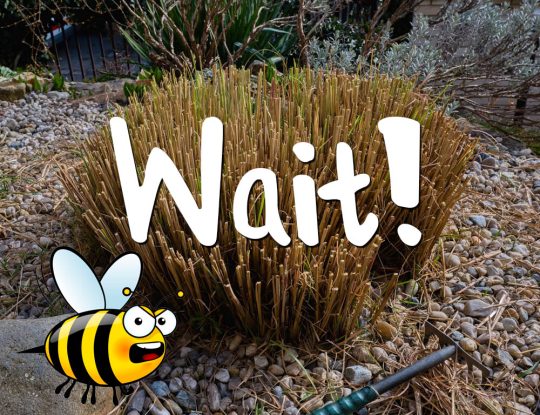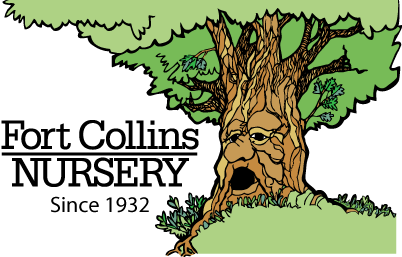By Alex Tisthammer

As warm weather sets in and the wind blows in the beginning of spring, it can feel like it’s time to start cleaning up the landscape and removing all the debris that has collected through winter. Before raking up a frenzy and chopping every brown stem in sight, don’t forget that one constant of Colorado – nothing is certain. There’s a good chance we’ll be thrown a curveball in the form of a drastic late season drop in temperatures (with or without a heavy, late season snow). Although the upcoming forecast predicts mild weather, in 2019 we experienced a very late season snow, on May 19th!

If the last year’s foliage and yard debris have been removed from garden beds, pollinators have nowhere to take shelter if a late season weather event occurs. This natural mulch can also protect tender shoots of newly emerging perennials and spring bulbs that can be susceptible to injury. On top of those benefits, letting the debris decompose in the yard will add nutrients into the soil, improving the overall soil health. Cutting back ornamental grasses and perennials is another task that seems like the perfect Sunday afternoon activity this time of year, but they are also important shelter for overwintering insects who inhabit the hollow stems and old foliage. It’s safe to do this when there has been at least a week of temperatures above 50 degrees. Once it is consistently warm enough, cut ornamental grasses back to 1-2 inches. Do not cut back varieties that stay evergreen over the winter; fescue, hakone grass, and blue oat grass. Perennials can be cut back to the base where the new growth is emerging. If it has a woody stem, cut them back to where the new leaves are starting to emerge.
So what CAN be done now? Even though it’s one of the least liked activities, this is the perfect time for weeding garden beds. Many weed seeds have already germinated and are starting to sprout. Getting rid of them now can minimize the amount of soil being yanked up with the weed’s root system, and they are much easier to remove when small. They are also more accessible now when perennials are small and shrubs are bare. Pruning winter dieback on trees and shrubs is a satisfying spring task that can also be done now. Trimming the branches before they leaf out makes it easier to spot dead limbs. As it warms, buds will start to swell along branches Prune any growth out where buds are not forming, the branch is light colored/brittle, or if the branch is not green when gently scratched with a fingernail. If there are no buds at all on any of the branches, wait longer to see if it is late to wake up, or if it will come back from the roots.
It’s easy to forget about bees and other beneficials in early spring when they aren’t seen on a day to day basis. If they are taken care of during the cold months and given places to winter over, your summer will be full of bees and butterflies pollinating your tomatoes and drinking nectar from your perennials. When beneficial insects abound, you can take pride in knowing your yard is a living thriving habitat for nature!
Originally published on March 27th, 2025.
